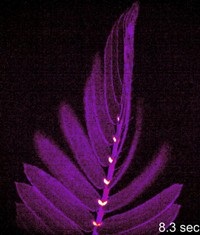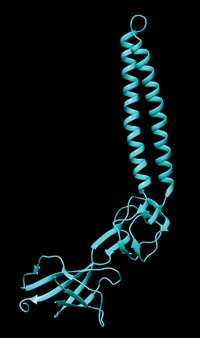Advertisement
Grab your lab coat. Let's get started
Welcome!
Welcome!
Create an account below to get 6 C&EN articles per month, receive newsletters and more - all free.
It seems this is your first time logging in online. Please enter the following information to continue.
As an ACS member you automatically get access to this site. All we need is few more details to create your reading experience.
Not you? Sign in with a different account.
Not you? Sign in with a different account.
ERROR 1
ERROR 1
ERROR 2
ERROR 2
ERROR 2
ERROR 2
ERROR 2
Password and Confirm password must match.
If you have an ACS member number, please enter it here so we can link this account to your membership. (optional)
ERROR 2
ACS values your privacy. By submitting your information, you are gaining access to C&EN and subscribing to our weekly newsletter. We use the information you provide to make your reading experience better, and we will never sell your data to third party members.
Chemical Communication
Plants signal danger through nervelike process
Glutamate, a neurotransmitter in mammals, triggers calcium signals to spread through plant after damage
by Katharine Sanderson, special to C&EN
September 23, 2018
| A version of this story appeared in
Volume 96, Issue 38

When a caterpillar, or some other pesky herbivore, nibbles on a leaf, the plant sends danger signals to its farthest fronds to activate the plant’s defense mechanisms, such as producing noxious compounds to chase off the pest or turning on pathways to heal damaged tissues. Now a research team led by Masatsugu Toyota at Saitama University reports that this signaling happens through a nervelike process involving glutamate, which is a neurotransmitter in mammals (Science 2018, DOI: 10.1126/science.aat7744). The team either cut the stems of or enticed caterpillars to munch on Arabidopsis plants engineered to express a protein sensor that fluoresces when it binds calcium ions. The plant’s defense mechanisms are triggered in part by increases in calcium ion concentration. Using fluorescent microscopy, the team detected spikes in calcium ion levels immediately at the sites of damage and two minutes later in distant leaves. The timing was too fast to be explained by the ions diffusing through the plant. Instead, the scientists hypothesized that the damage causes the release of glutamate that then activates ion channels to open, triggering the influx of calcium ions to the farthest reaches of the plant. With the help of a fluorescent glutamate sensor, the researchers showed that glutamate levels increased at the site of the wound on the plant.





Join the conversation
Contact the reporter
Submit a Letter to the Editor for publication
Engage with us on Twitter